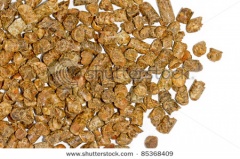Difference between revisions of "Citrus Pellets"
From Cargo Handbook - the world's largest cargo transport guidelines website
| Line 2: | Line 2: | ||
| image = Citruspellets.jpg | | image = Citruspellets.jpg | ||
| origin = This Table shows only a selection of the most important countries of origin and should not be thought of as exhaustive.<ul><li>Europe</li><li>Africa</li><li>Asia</li><li>India</li><li>America: Brazil</li><li>Australia</li></ul> | | origin = This Table shows only a selection of the most important countries of origin and should not be thought of as exhaustive.<ul><li>Europe</li><li>Africa</li><li>Asia</li><li>India</li><li>America: Brazil</li><li>Australia</li></ul> | ||
| − | | stowage factor = | + | | stowage factor = 1.68 m3/t |
| − | | angle of repose = | + | | angle of repose = approx. 40° |
| − | | humidity and moisture = | + | | humidity and moisture = <ul><li>Relative humidity: 70%</li><li>Water content: 8 - 12%</li><li>Maximum equilibrium moisture content 70% |
| oil content = | | oil content = | ||
| ventilation = | | ventilation = | ||
| risk factors = | | risk factors = | ||
}} | }} | ||
Revision as of 16:10, 22 February 2012
| Infobox on Citrus Pellets | |
|---|---|
| Example of Citrus Pellets |  |
| Facts | |
| Origin | This Table shows only a selection of the most important countries of origin and should not be thought of as exhaustive.
|
| Stowage factor (in m3/t) | 1.68 m3/t |
| Angle of repose | approx. 40° |
| Humidity / moisture |
|
| Oil content | |
| Ventilation | |
| Risk factors | |











